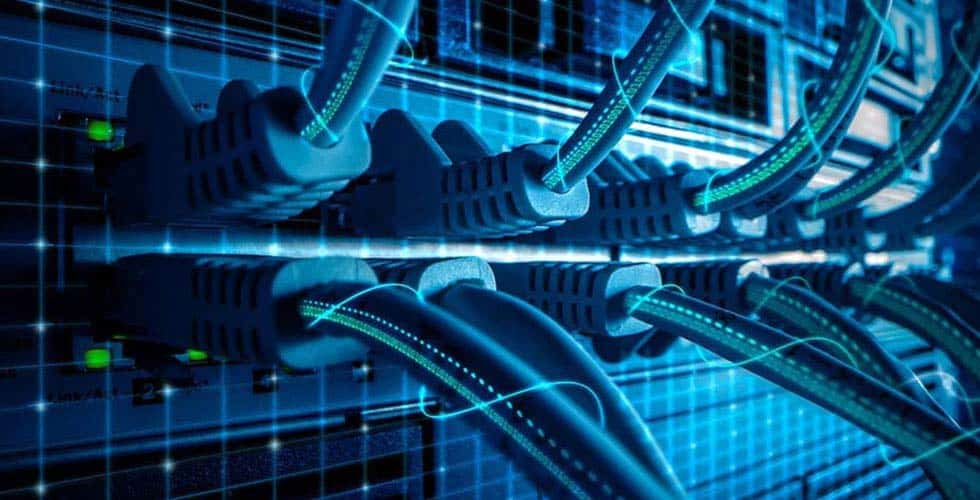In recent years, the increasing number of companies migrating from legacy systems to private cloud environments has prompted a significant shift in the way data centers are structured. As businesses move toward a more advanced IT infrastructure, IT professionals must ensure that they choose the right hardware and storage solutions. One of the most crucial decisions in this migration is selecting the appropriate network interface for cloud-in-rack architectures. The question many businesses face is: should they choose 10GBASE-T or SFP+?
In this article, we will delve into the reasons why SFP+ is becoming the preferred choice for cloud-in-rack setups, particularly when aiming to optimize Total Cost of Ownership (TCO), reduce latency, and improve overall network performance.
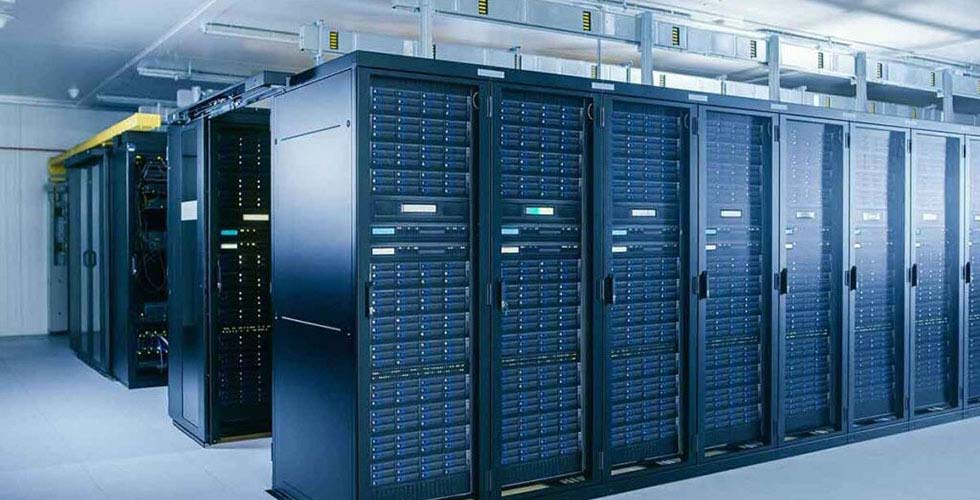
The Rise of Cloud-in-Rack Architectures
The trend toward cloud-in-rack architecture is driven by the growing demand for scalable and efficient IT solutions. This setup condenses all physical components of a server architecture into various layers within a single robust rack, with the Top of Rack (TOR) switch used for easier organization. As 10G technology becomes a standardized choice for businesses, it’s essential to plan the architecture of your rack with sufficient flexibility to support SFP-based connections.
While businesses often focus on more obvious cost-cutting measures, such as server hardware and storage, many overlook the long-term savings and benefits associated with network interface choices. Specifically, SFP+ is proving to be the more efficient option compared to traditional 10GBASE-T.
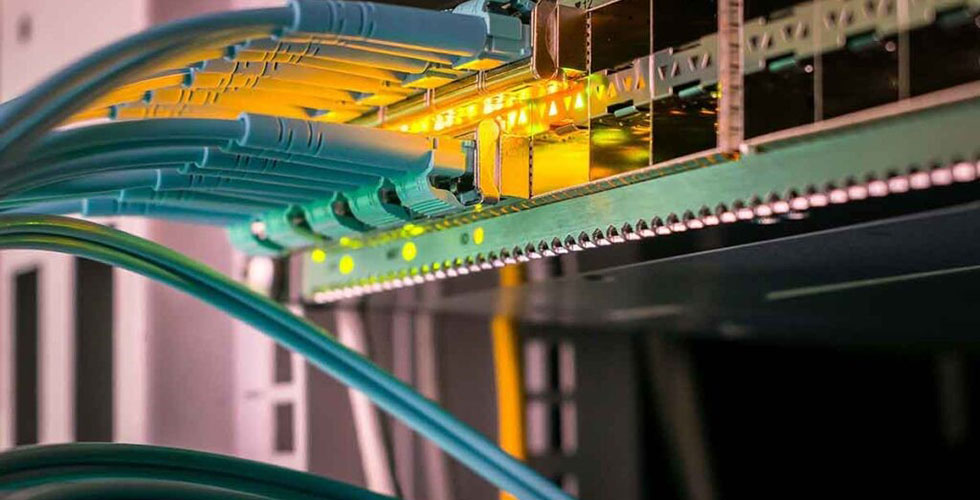
Comparing 10G SFP+ and BASE-T: A Deep Dive
When considering the choice between SFP+ and BASE-T, there are several key factors to take into account: power consumption, latency, and overall cost-effectiveness. Let’s break down the advantages of SFP+ over 10GBASE-T.
Power Efficiency
In a Cloud-in-Rack setup, power consumption is a critical factor. Each SFP+ port consumes approximately 0.7 watts, whereas a 10GBASE-T port consumes up to 2 watts.
For a 48-port Top-of-Rack (TOR) switch running in a 24/7 data center environment, the power consumption difference becomes substantial:
- SFP+: 242 kWh per day
- 10GBASE-T: 691 kWh per day
Assuming an average energy cost of $0.1118 per kWh, the yearly energy cost for SFP+ totals $8,800, compared to $25,200 for 10GBASE-T—a savings of over 65%.
Low Latency
Latency is another area where SFP+ outperforms 10GBASE-T.
- SFP+: 300 nanoseconds per link, regardless of cable length.
- 10GBASE-T: Up to 2 microseconds per link.
The lower latency of SFP+ is critical for applications requiring real-time data processing, such as:
- VDI deployments
- Streaming analytics (e.g., surveillance)
- Multimedia processing
- IoT monitoring in manufacturing and healthcare

Flexible Cabling Options
SFP+ supports both fiber optic and Twinax cables, making it a versatile solution for short- and long-distance applications. For short distances, Twinax cables are cost-effective, while fiber provides reliable, high-speed data transmission for longer distances.
Additionally, the hardware cost of SFP+ switches is comparable to 10GBASE-T switches, allowing users to leverage SFP+ benefits without incurring significant upfront costs.

Real-World Use Cases for SFP+
SFP+ shines in scenarios where power efficiency and low latency are crucial. Typical use cases include:
- Data centers: Optimize rack performance and reduce TCO.
- Virtualized environments: Improve responsiveness in VDI and cloud deployments.
- Healthcare and manufacturing: Support real-time monitoring and predictive analytics.
Deploying storage solutions with built-in SFP+ ports eliminates additional upgrade costs, ensuring seamless integration and future-proofing the infrastructure.
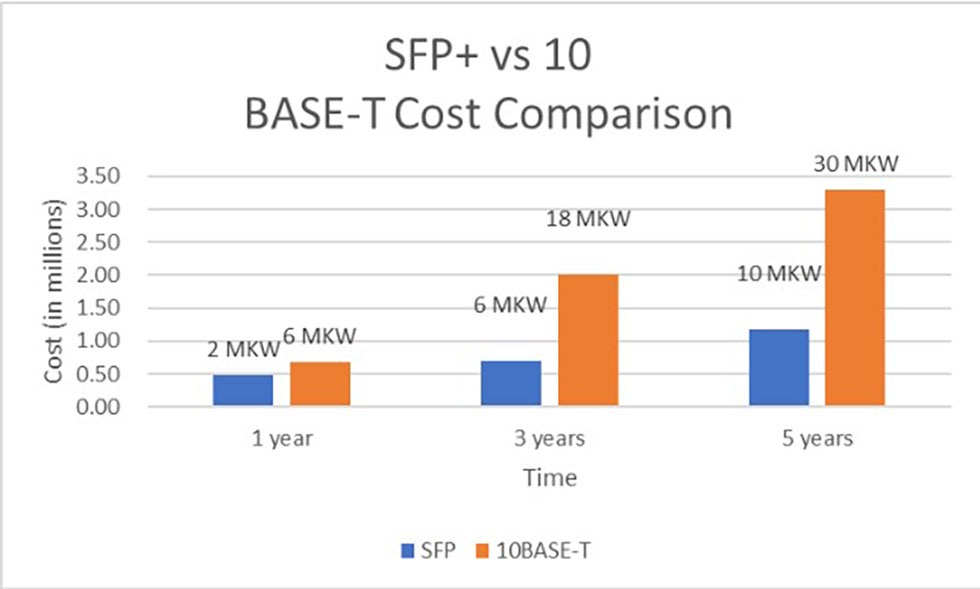
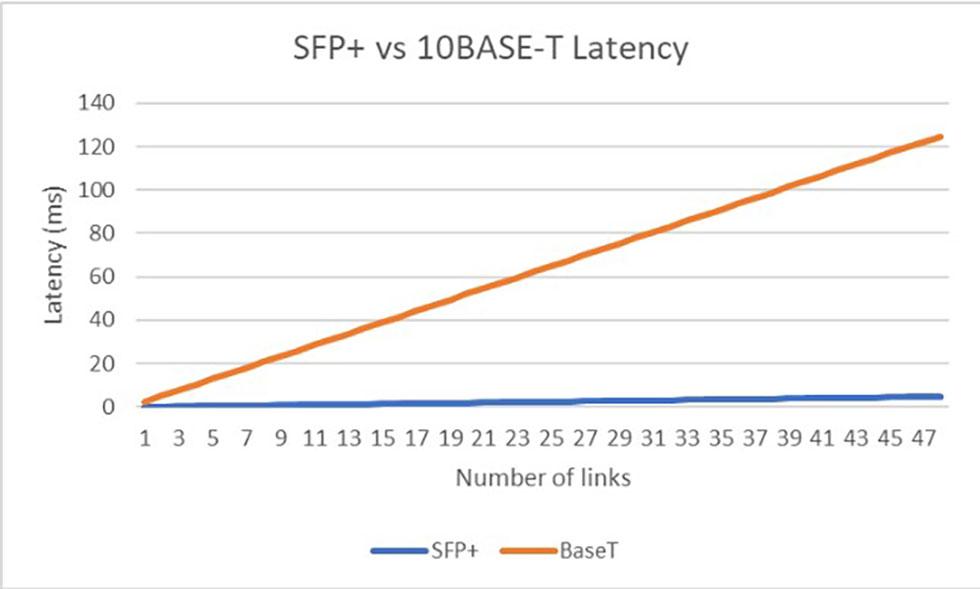
Future-Proof Your Data Center with SFP+
As businesses look to modernize their data centers, choosing the right interface becomes critical. SFP+ offers a host of benefits over 10GBASE-T, including lower energy consumption, reduced latency, and improved overall performance. While the initial investment in SFP+ may be slightly higher, the long-term savings in energy costs, maintenance, and performance gains make it the superior choice for businesses looking to future-proof their IT infrastructure.
Incorporating SFP+ into your cloud-in-rack architecture ensures not only a more efficient and cost-effective setup but also a scalable, high-performance system that will support the demands of modern enterprise applications.
